By Charles Cecil
Gum Arabic? No, it’s not a Saudi Arabian chiclet. Technically, it’s an emulsifier, a soluble, tasteless substance that helps ingredients dissolve and remain in solution. It prevents oil from pooling inside a jar of peanut butter, keeps sugar suspended in soft drinks, allows mayonnaise to maintain its consistency and stops cough drops from melting.
I discovered this miracle food additive when I was living in Niger, the world’s poorest Muslim country. Niger has few natural resources, but its climate and soil conditions make it ideal for the cultivation of the acacia senegal tree, the source of the world’s gum Arabic.
I had seen gum Arabic on sale in the local markets. After work and on weekends I loved to wander through these vibrant places, soaking up the sounds of frying donuts, customers haggling over prices and vendors shouting in a variety of dialects to attract potential buyers to their stands. The aromas of meat on brochettes grilling over charcoal fires merged with the smells of freshly harvested grain and bags of rice. But no matter where I roamed in the markets I was never far from gum Arabic.
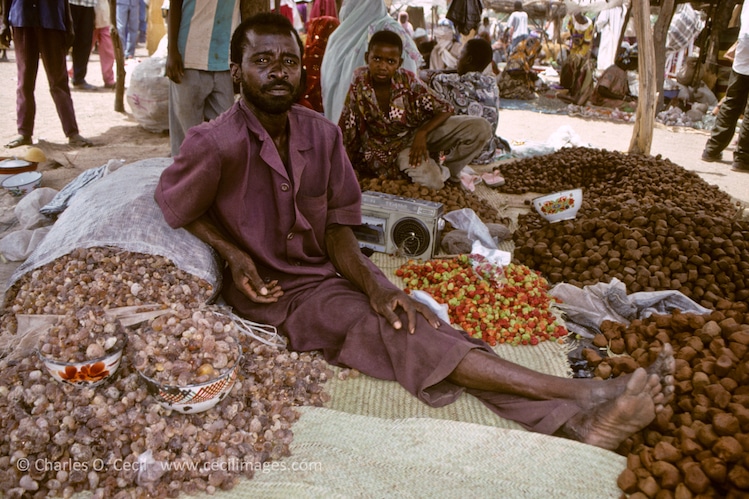
Vendor in the Bonkoukou Market northeast of Niamey, the capital of Niger, leans on plastic bags filled with gum Arabic while he waits for customers.
Nigeriens buy it to relieve sore throats or to promote digestion. Some claim it is also useful for treating eye problems or the common cold. But I soon learned that most of the product is exported to France where the gum nodules are processed into uniformly-sized grains and powders required by industrial consumers.
Sudan is the world’s leading producer of gum Arabic, but a few years ago Nigerien businessman Boureima Wankoye realized that if he and his brother imported acacia seedlings from Sudan and established plantations in Niger they could develop a new source of export revenue to help their country’s struggling economy. I wanted to meet these bold entrepreneurs and several days later Wankoye invited me to meet him at his Niamey warehouse. A new shipment of acacia seedlings from Sudan had just arrived. As we drove out from Niamey to one of his plantations he explained why gum Arabic had the potential of becoming a major cash crop.
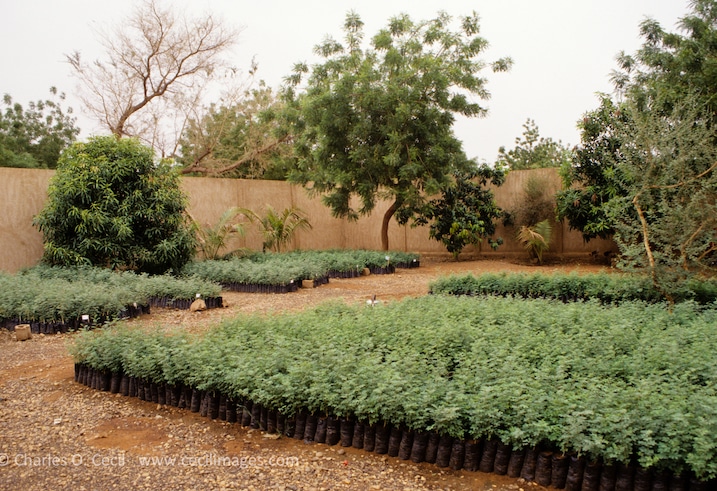
Acacia Senegal Tree Nursery, Niger, West Africa.
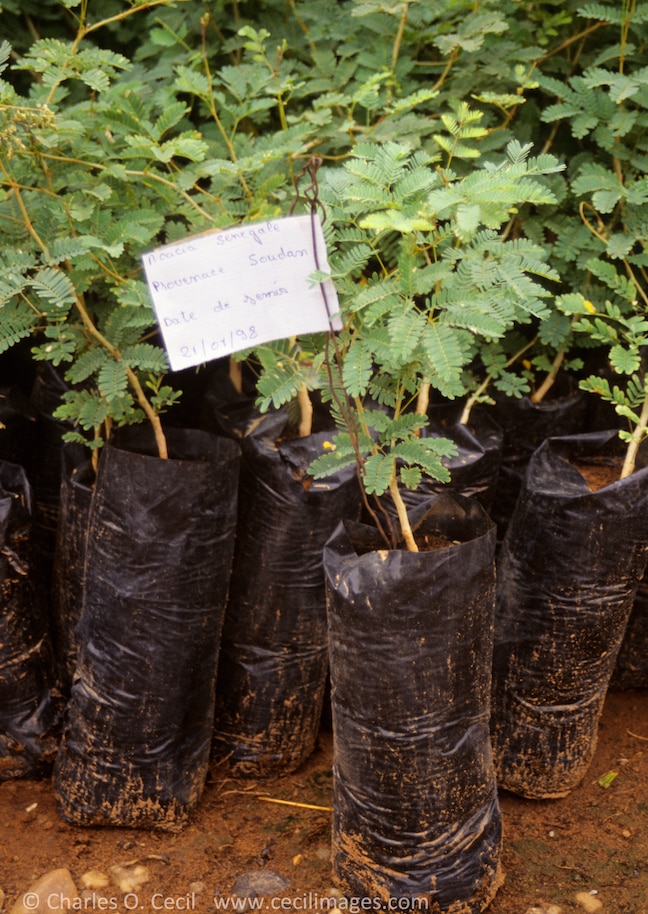
Acacia senegal seedlings imported from Sudan await planting.
The acacia senegal grows along the southern edge of the Sahara desert, but its range extends as far east as the semi-arid regions of Oman and India. Often growing wild, the tree is drought-resistant and can survive temperatures up to 113F degrees. The first couple of years they require protection from grazing livestock but after that need little care. The trees are good soil stabilizers. Leaf litter enriches depleted soils. The tree produces seed pods enjoyed by livestock. They grow to a height of six to 20 feet and once mature will produce for about ten years. The gum is the sap of the tree.
Some gum will naturally emerge from cracks in the bark, but commercial producers hire skilled caretakers to stimulate the flow by stripping away small pieces of bark. This requires some training so as not to damage the tree. This is normally done about once a year, after the rainy season. Gum can then be collected every few weeks for several months.
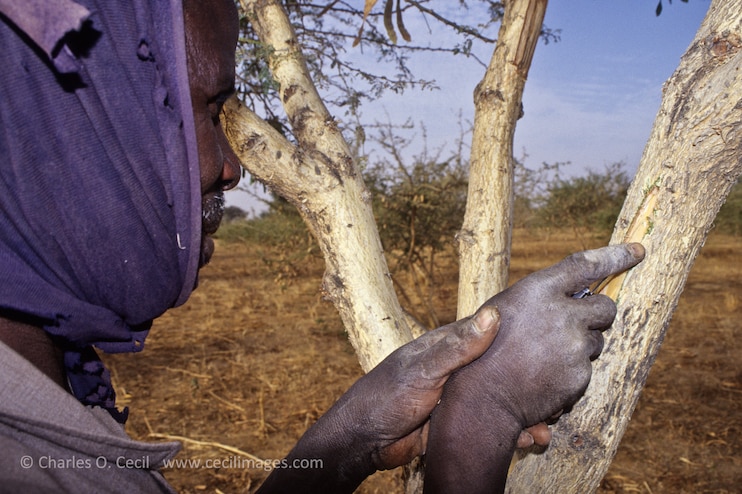
Gum Arabic. Worker Cutting Bark of Acacia Senegal to Promote Flow. Niger, West Africa.
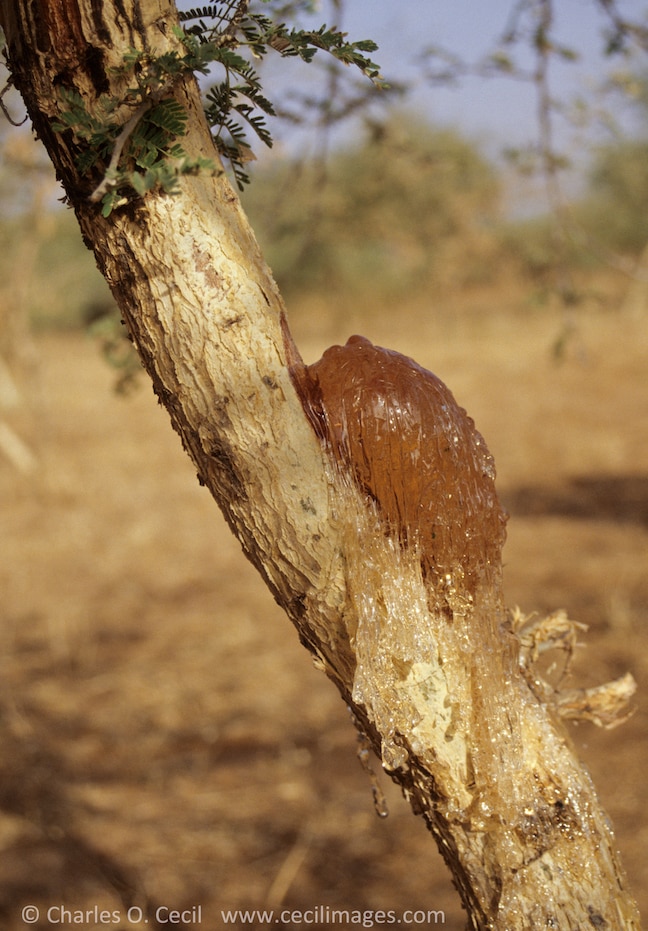
Gum Arabic on tree branch, waiting to be collected. Niger, West Africa.
Women and children collect the gum from trees, usually in the cool of the morning, bag it, and bring it in to the warehouse, where they are paid by weight for the product they bring in. In removing the gum from the bark they often carry pieces of bark into the bag, or pick up pieces of grass or other debris attached to nodules of gum they find on the ground. This requires cleaning the gum before bagging for export. After visiting the plantation we passed by the warehouse again to see the women cleaning by hand the gum which other women and children had collected.
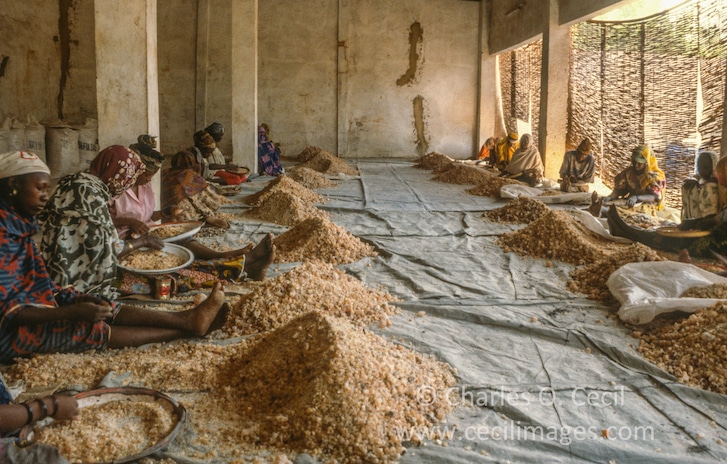
Niamey, Niger. Women Cleaning and Sorting Gum Arabic, before Shipping.
The warehouse is a rather dull and dismal place, open to the air on one side, with sparse artificial lighting. Light fabric netting along the open side provides shade to workers sitting on the ground, while still allowing some natural ventilation.
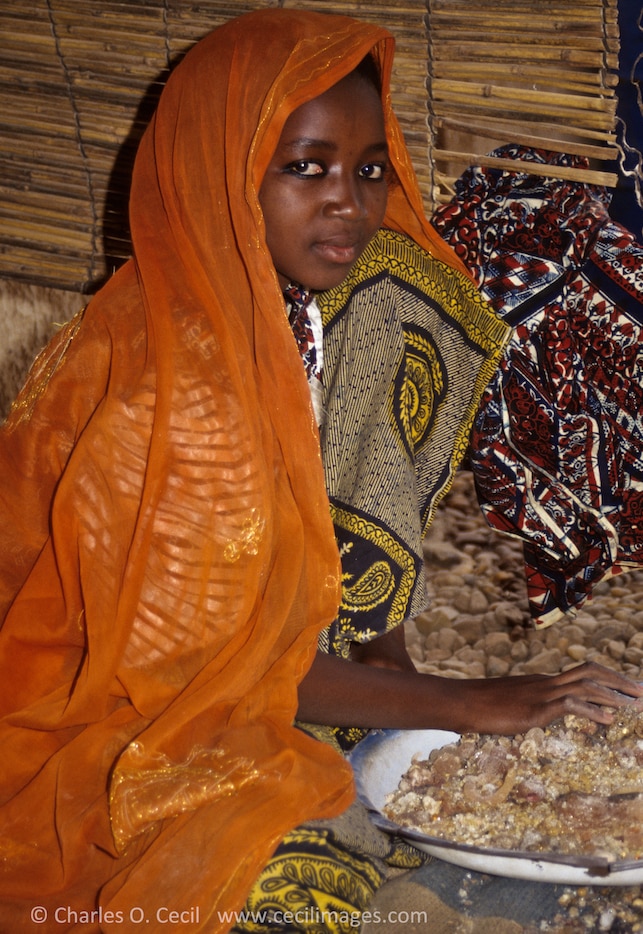
Hausa woman removing straw, dirt and other contaminents from gum arabic by hand. Niamey, Niger, West Africa.
These women are paid by the hour. Since most have little formal education they are happy to achieve some degree of independence provided by the money they earn. They can continue this work for several months each year, beginning when the rainy season ends in October.
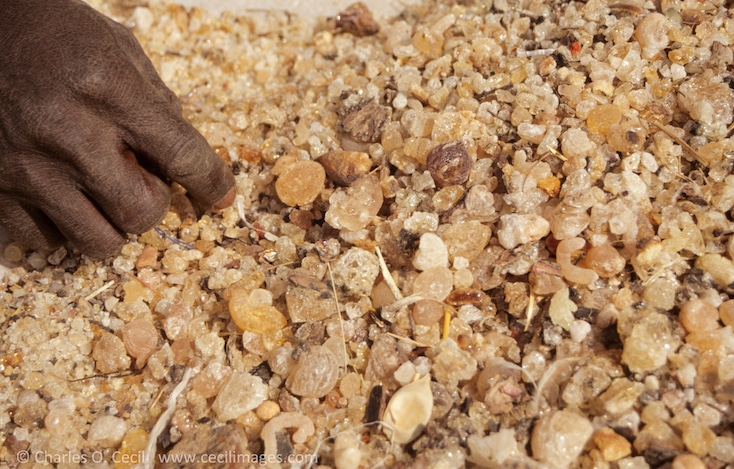
Gum arabic from the field waiting to be cleaned by hand. Niger, West Africa.
At the end of my visit to the warehouse where gum is collected and cleaned, I picked up a few nodules of the gum to take home. This became useful the following weekend.
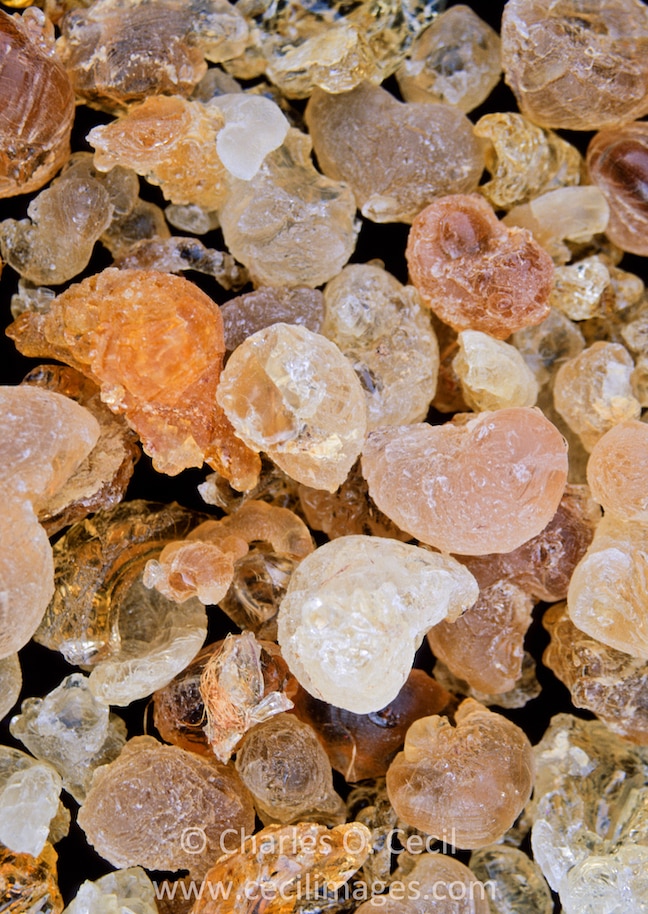
Samples of freshly cleaned gum Arabic showing color and size variations
Before coming to Niger we knew we couldn’t buy maple syrup there so we brought a few small bottles of imitation maple flavoring with us from the States. Using this, my wife made a homemade syrup substitute by boiling sugar in water and adding the flavoring to use on occasional Sunday morning pancakes. When I took the previous week’s preparation out of the refrigerator the Sunday after my visit I saw a large deposit of crystallized sugar grains in the bottom of the pitcher. Reaching for the gum I dropped a pea-sized pellet into an ounce of water and stirred. I added this to the homemade syrup and in less than half a minute the sugar crystals dissolved.
Have you ever looked closely at the label of your favorite soft drink? If it contains sugar there’s a good chance it also contains gum Arabic, needed to keep the sugar in solution rather than crystallizing and sinking to the bottom of the bottle or can.
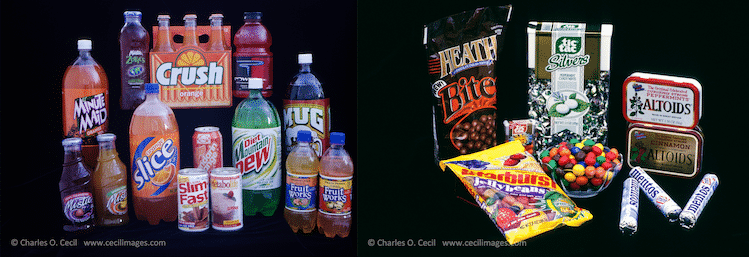 Breath mints, candy, and many bottled drinks need gum Arabic to keep their ingredients in solution, either in the manufacturing process or when ready for consumption.
Breath mints, candy, and many bottled drinks need gum Arabic to keep their ingredients in solution, either in the manufacturing process or when ready for consumption.
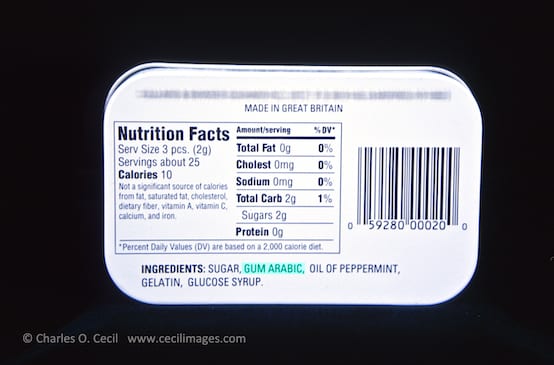
Gum Arabic as Ingredient in a Popular Mint.
In candy the gum keeps flavor oils and fats evenly distributed and prevents the crystallization of sugar. Dry-packaged products such as instant drinks, dessert mixes, and soup bases use it to enhance the shelf life of flavors. It is also used in paint, cosmetics, lotions, textile sizing and finishing, glues, and pesticides and many pharmaceutical products.
Gum Arabic is also an important ingredient in many pastries such as this Moroccan delicacy known as cornes de gazelles.
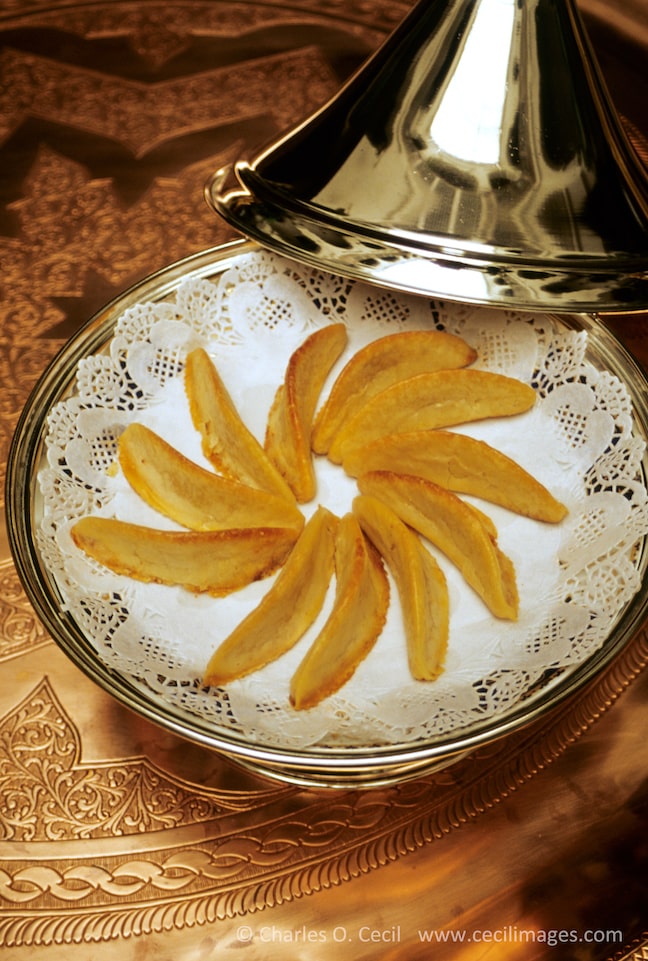
Cornes de Gazelle, Moroccan Pastry using Gum Arabic. Fez, Morocco.
Artists use gum Arabic. It is not only used as a binder in watercolors; it also can be used to add a bit of gloss or shine to parts of a painting the artist wants to stand out. Medieval scribes discovered that when producing illustrated manuscripts the use of gum Arabic rendered colors more intense, an improvement over glair, a substance produced from egg whites, which was more time-consuming and difficult to prepare. In Turkey illuminators made a gold paste by mixing melted gum Arabic with gold leaf.
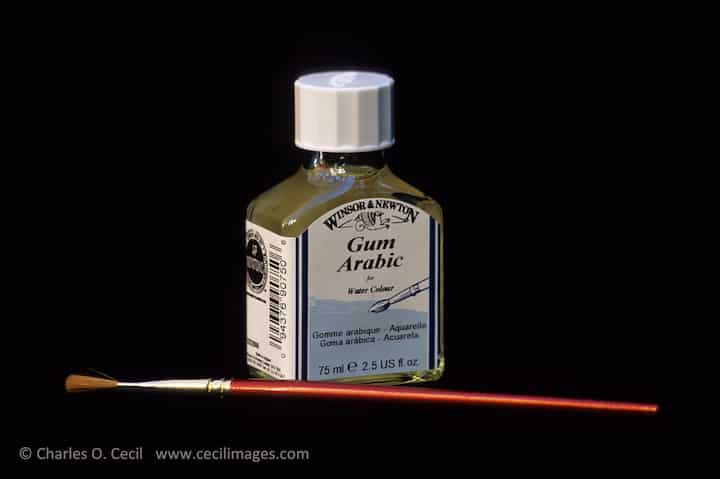
Gum Arabic used in Artists’ Solution for Watercolors.
In 2003 the United Nations Environment Program recognized the Wankoyes’ Nigerien effort as an excellent example of sustainable development. Some 6,000 rural families were benefiting from work opportunities created by this local industry.
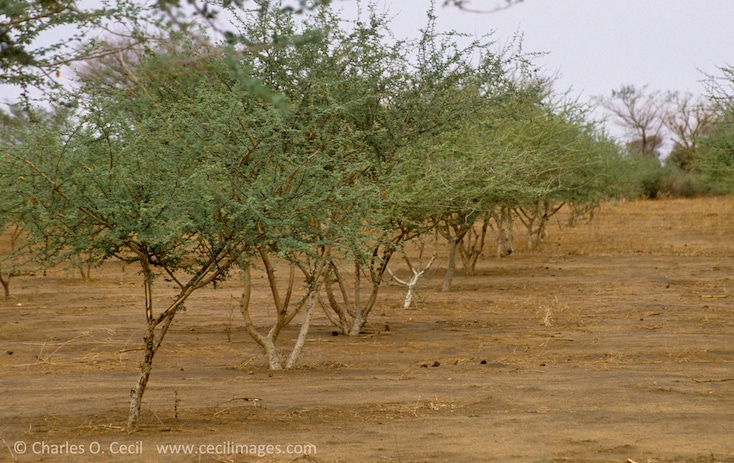
Row of Acacia Senegal trees in a gum Arabic plantation, Niger, West Africa.
Gum Arabic production is likely to grow in importance as an export product for countries lying in the Sahelian belt below the Sahara in Africa. The United Nations Conference on Trade and Development reports that exports of cleaned but unprocessed gum rose from an average of $95 million in 1992-94 to $150 million during 2014-16. This trend seems likely to continue. No artificial substitute has yet been created which possesses qualities comparable to those found in gum Arabic. Consumers’ demand for “natural ingredients” in products they eat and drink seems likely to ensure continued growth.![]()
Charles Cecil served as U.S. Ambassador to Niger for three years. Today he continues to visit Africa as a travel photographer. Please see Cecil’s Featured Photography photo essay on Goree Island, Senegal elsewhere on this site. For more of Cecil’s photos of cultures in the developing world, see http://www.cecilimages.com/
|


